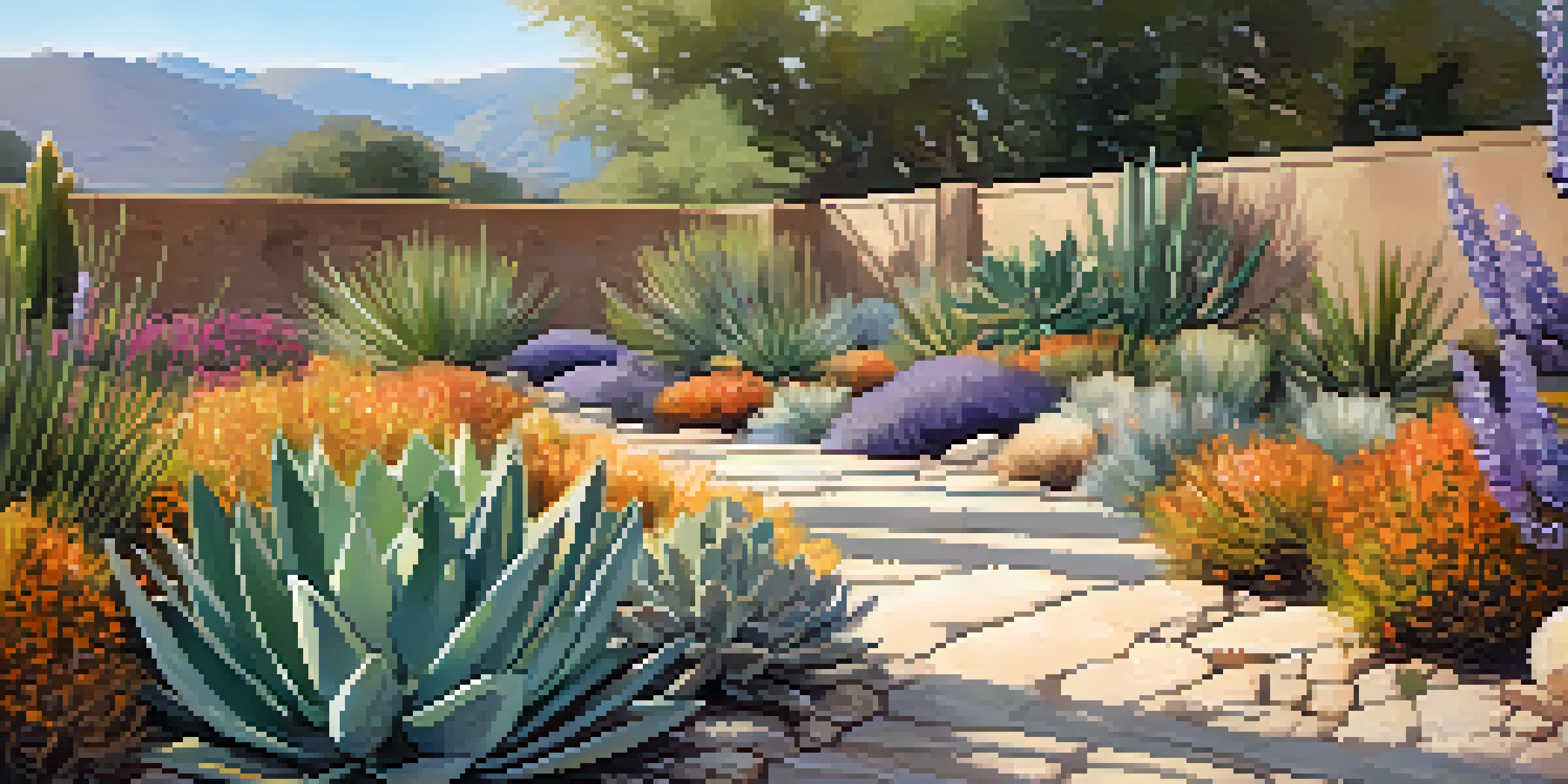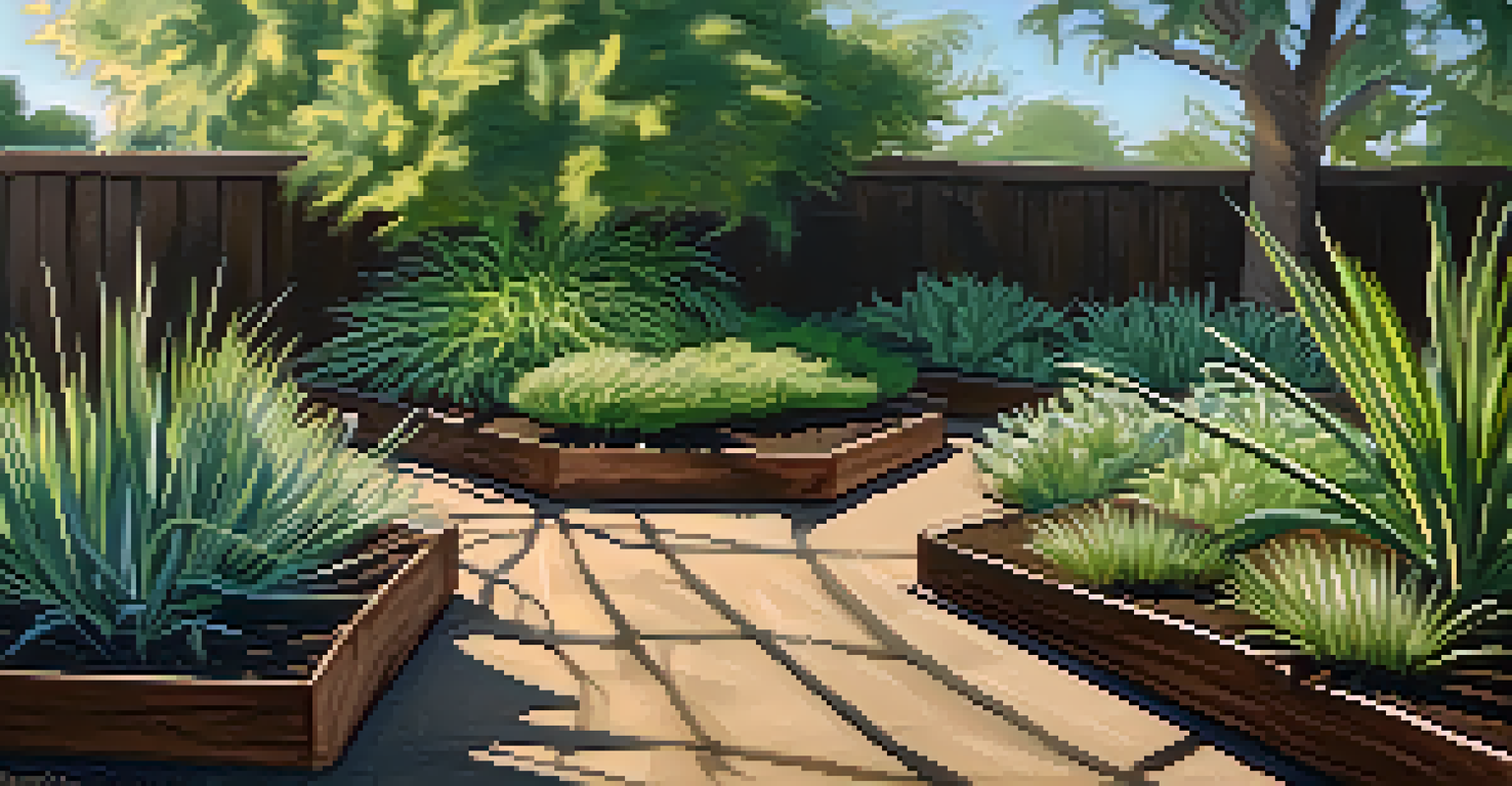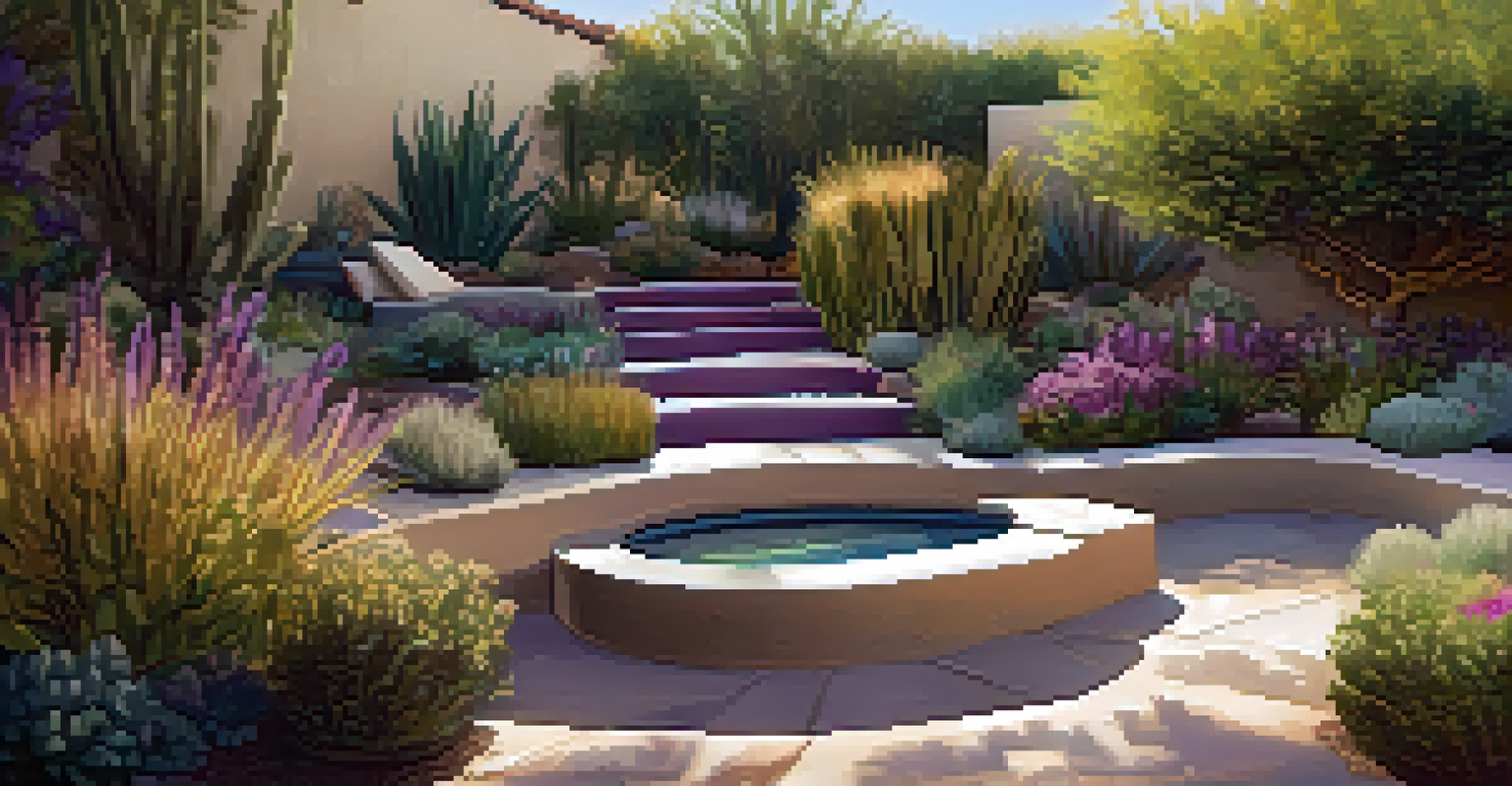Drought-Tolerant Plants: Key to Sustainable Landscaping

Understanding Drought-Tolerant Plants and Their Benefits
Drought-tolerant plants are species that can survive with minimal water. These plants have adapted to arid conditions, making them ideal for regions prone to drought. By incorporating such plants into landscaping, homeowners can create beautiful gardens that require less maintenance and resources.
The best time to plant a tree was twenty years ago. The second best time is now.
One of the primary benefits of drought-tolerant plants is their ability to conserve water. In a world where water scarcity is becoming a pressing issue, these plants help mitigate the impact of dry spells. This not only supports a sustainable environment but also reduces water bills for homeowners.
Additionally, drought-tolerant plants often thrive in poor soil conditions and are less susceptible to pests and diseases. This resilience means that gardens can flourish with less intervention, allowing for a more natural ecosystem. Overall, choosing these plants is a win-win for both the environment and your garden.
Selecting the Right Drought-Tolerant Plants for Your Garden
When choosing drought-tolerant plants, it's essential to consider your local climate and soil type. Native plants are often the best choice as they are already adapted to the local environment. Researching plants that thrive in your specific region can lead to a more successful and sustainable garden.

Some popular drought-tolerant plants include succulents, lavender, and ornamental grasses. These plants not only require less water but also come in various colors and textures, adding visual interest to your landscape. Mixing and matching different species can create a stunning garden that reflects your personal style.
Benefits of Drought-Tolerant Plants
These plants conserve water, thrive in poor soil, and require less maintenance, making them ideal for sustainable gardening.
Don't forget to think about the layout of your garden. Grouping plants with similar water needs together can optimize their growth and reduce waste. By planning thoughtfully, you can create an aesthetically pleasing and environmentally friendly garden that thrives even in dry conditions.
Designing a Sustainable Landscape with Drought-Tolerant Plants
Designing a landscape with drought-tolerant plants doesn't mean sacrificing beauty. In fact, these plants can create stunning visual displays when arranged thoughtfully. Using varying heights, colors, and textures can lead to a dynamic and inviting outdoor space.
Nature does not hurry, yet everything is accomplished.
Incorporating hardscaping elements like gravel paths, stone walls, or decorative boulders can enhance the overall aesthetic while minimizing water needs. These features not only break up the landscape but also help retain moisture in the soil. The combination of plants and hardscaping creates a balanced environment that thrives on less water.
Moreover, adding features like rain gardens or permeable paving can further enhance sustainability. These designs capture and filter rainwater, allowing it to seep into the ground and nourish your plants. By thinking creatively, you can design a landscape that is both beautiful and eco-friendly.
The Role of Mulching in Drought-Tolerant Landscaping
Mulching is a crucial technique in drought-tolerant landscaping that helps retain moisture in the soil. A layer of organic mulch, like wood chips or straw, acts as a protective barrier against evaporation. This simple step can significantly reduce the amount of water your garden needs, making it even more sustainable.
In addition to conserving water, mulch also suppresses weeds that compete with your plants for resources. By keeping weeds at bay, your drought-tolerant plants can thrive without the stress of competition. Plus, as the mulch breaks down, it enriches the soil, providing nutrients that support plant health.
Designing Beautiful Landscapes
Incorporating drought-tolerant plants with thoughtful design elements can create visually stunning and eco-friendly outdoor spaces.
Regularly replenishing your mulch layer is essential for maintaining its effectiveness. Over time, it can decompose and lose its insulating properties. By keeping an eye on your mulch, you can ensure your garden remains a thriving oasis during dry spells.
Watering Techniques for Drought-Tolerant Gardens
Even drought-tolerant plants need some water, especially when they're getting established. It's crucial to understand the best watering techniques to ensure their survival. Deep watering less frequently is often more effective than shallow watering daily, encouraging deeper root growth.
Drip irrigation systems can be a fantastic investment for drought-tolerant gardens. These systems deliver water directly to the plant roots, minimizing evaporation and runoff. They allow for efficient water use, ensuring your plants receive the moisture they need without wasting resources.
Another technique is to water during the cooler parts of the day, such as early morning or late evening. This practice reduces evaporation and allows the water to penetrate the soil more effectively. With the right watering strategy, your drought-tolerant plants can flourish beautifully.
Combining Aesthetics and Functionality in Landscaping
Drought-tolerant landscaping is an opportunity to blend aesthetics with functionality. By choosing plants that are both beautiful and resilient, you can create spaces that are visually appealing while being environmentally friendly. This approach allows homeowners to enjoy their outdoor spaces without compromising on style.
Consider using a theme or color palette when selecting plants to maintain visual cohesion. For example, a desert garden might feature succulents in various shades of green and purple, combined with sandy-colored rocks. This not only enhances the beauty but also reinforces the drought-tolerant message.
Importance of Sustainable Practices
Adopting drought-tolerant landscaping is essential for addressing water scarcity and promoting healthier ecosystems.
Moreover, functional elements like seating areas or pathways can be integrated seamlessly into the landscape design. These features encourage outdoor living while promoting the use of sustainable plants. By thoughtfully combining aesthetics and functionality, you can create a space that is both inviting and responsible.
The Future of Sustainable Landscaping Practices
As water scarcity becomes a growing concern, the importance of sustainable landscaping practices is more evident than ever. Drought-tolerant plants play a crucial role in this movement, encouraging homeowners and communities to adopt environmentally friendly gardening techniques. This shift not only benefits individual gardens but also contributes to the broader health of our ecosystems.
Innovative landscaping solutions, such as xeriscaping, are gaining popularity as they emphasize water conservation. These practices prioritize the use of drought-tolerant plants and smart garden design, creating beautiful landscapes that require minimal water. As awareness grows, more people are embracing these sustainable practices.

Ultimately, the future of landscaping lies in our ability to adapt to changing environmental conditions. By incorporating drought-tolerant plants and sustainable practices, we can create gardens that are not only stunning but also resilient. Making these choices today leads to a healthier planet for generations to come.